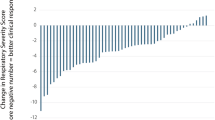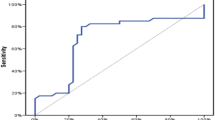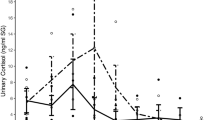Abstract
ABSTRACT: The measurement of cortisol in saliva has become a reliable tool for both the scientist and the clinician for studying adrenal cortical function in the adult. We have measured salivary cortisol in samples from 138 healthy infants, children, and adolescents, and from 14 adults. Saliva samples were obtained at home using a cotton swab and a saliva-collecting tube at 800, 1300, and 1800 h before meals. Cortisol was measured using a time-resolved fluorescent immunoassay. Cortisol levels in saliva ranged from less than 2 nmol/L up to more than 100 nmol/L. Cortisol levels were age-dependent. Interestingly, after the age of 6 y, cortisol levels correlated significantly with pubertal stages (analysis of variance). No sex difference was found. In addition, cortisol morning levels and daily cortisol levels (area under the curve from three measurements) increased with body weight and body mass index. The highest cortisol levels were measured in saliva of children younger than 1 y. No circadian variation was evident before the age of 9 mo. After 1 y of age, salivary cortisol levels varied in a circadian fashion. The measurement of salivary cortisol levels is an attractive way of testing adrenal function in infants and children. It provides a reliable tool for the determination of the physiology and developmental characteristics of cortisol metabolism.
Similar content being viewed by others
Log in or create a free account to read this content
Gain free access to this article, as well as selected content from this journal and more on nature.com
or
Author information
Authors and Affiliations
Rights and permissions
About this article
Cite this article
Kiess, W., Meidert, A., Dressendörfer, R. et al. Salivary Cortisol Levels throughout Childhood and Adolescence: Relation with Age, Pubertal Stage, and Weight. Pediatr Res 37, 502–506 (1995). https://doi.org/10.1203/00006450-199504000-00020
Received:
Accepted:
Issue date:
DOI: https://doi.org/10.1203/00006450-199504000-00020
This article is cited by
-
Sex-specific interactions between stress axis and redox balance are associated with internalizing symptoms and brain white matter microstructure in adolescents
Translational Psychiatry (2024)
-
Development of the circadian system in early life: maternal and environmental factors
Journal of Physiological Anthropology (2022)
-
Human milk as “chrononutrition”: implications for child health and development
Pediatric Research (2019)
-
Peak cortisol response to corticotropin-releasing hormone is associated with age and body size in children referred for clinical testing: a retrospective review
International Journal of Pediatric Endocrinology (2015)
-
Distribution characteristics of salivary cortisol measurements in a healthy young male population
Journal of Physiological Anthropology (2015)



